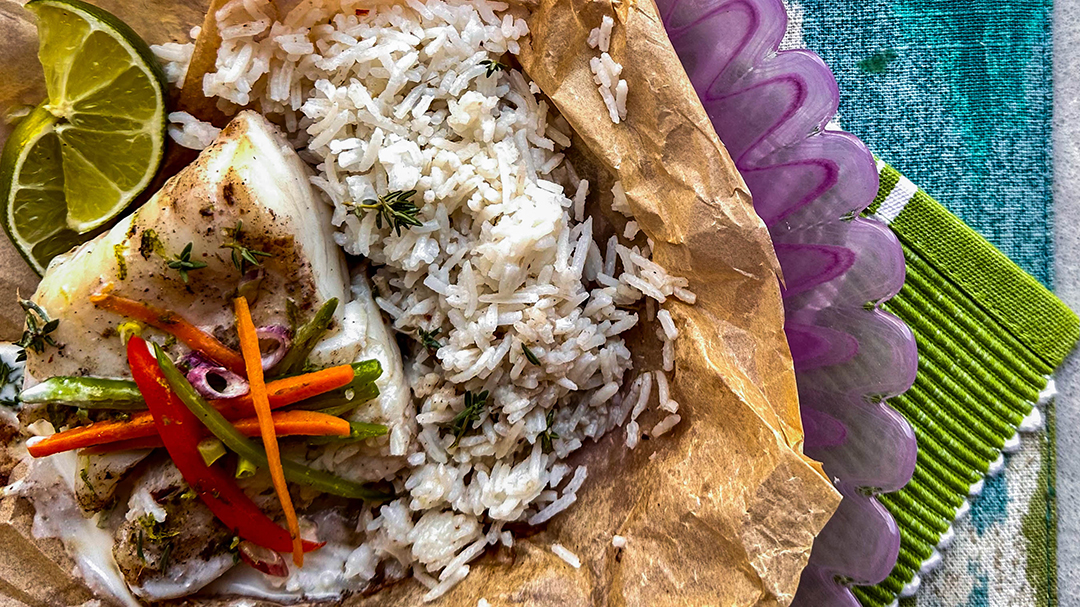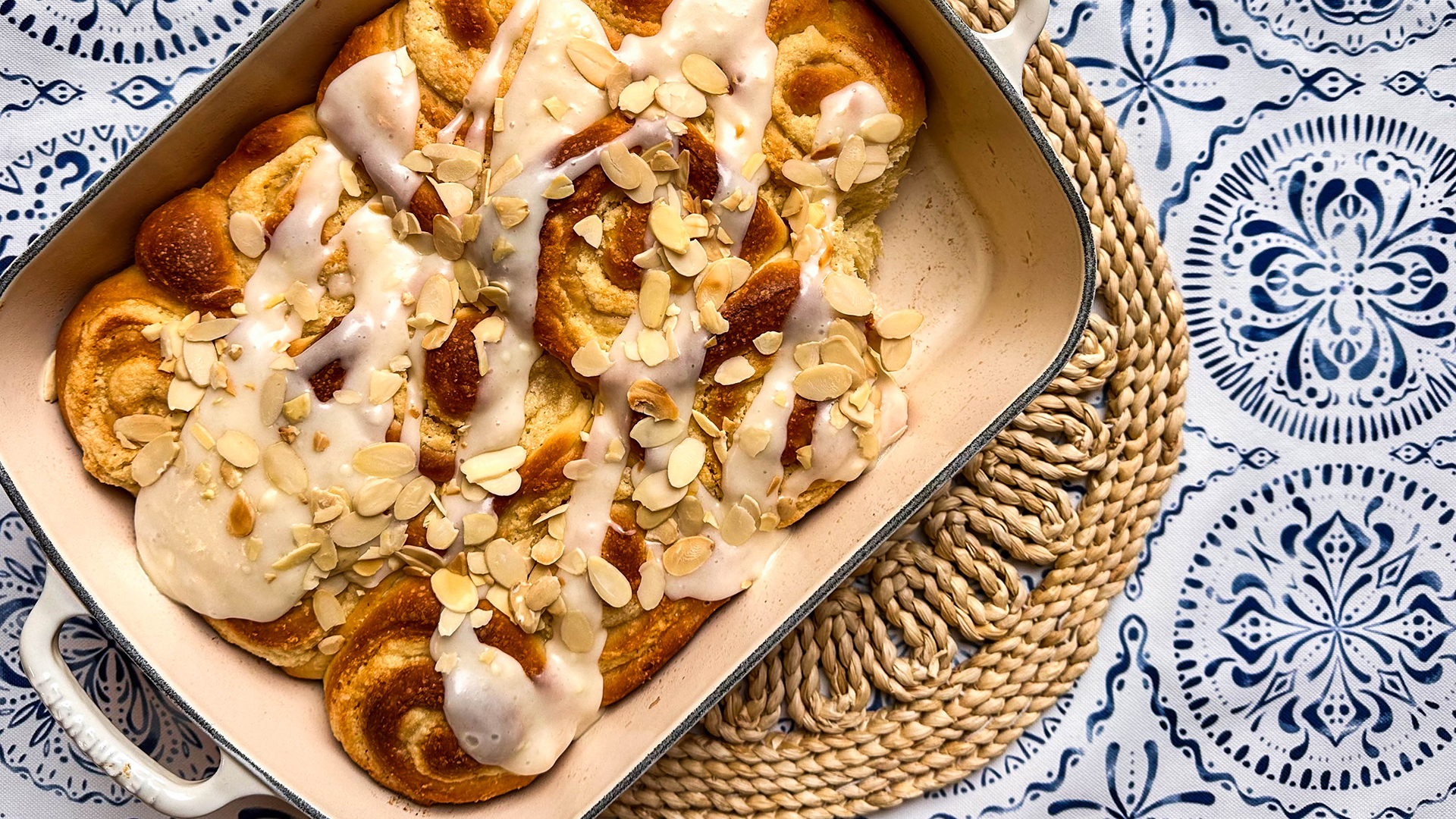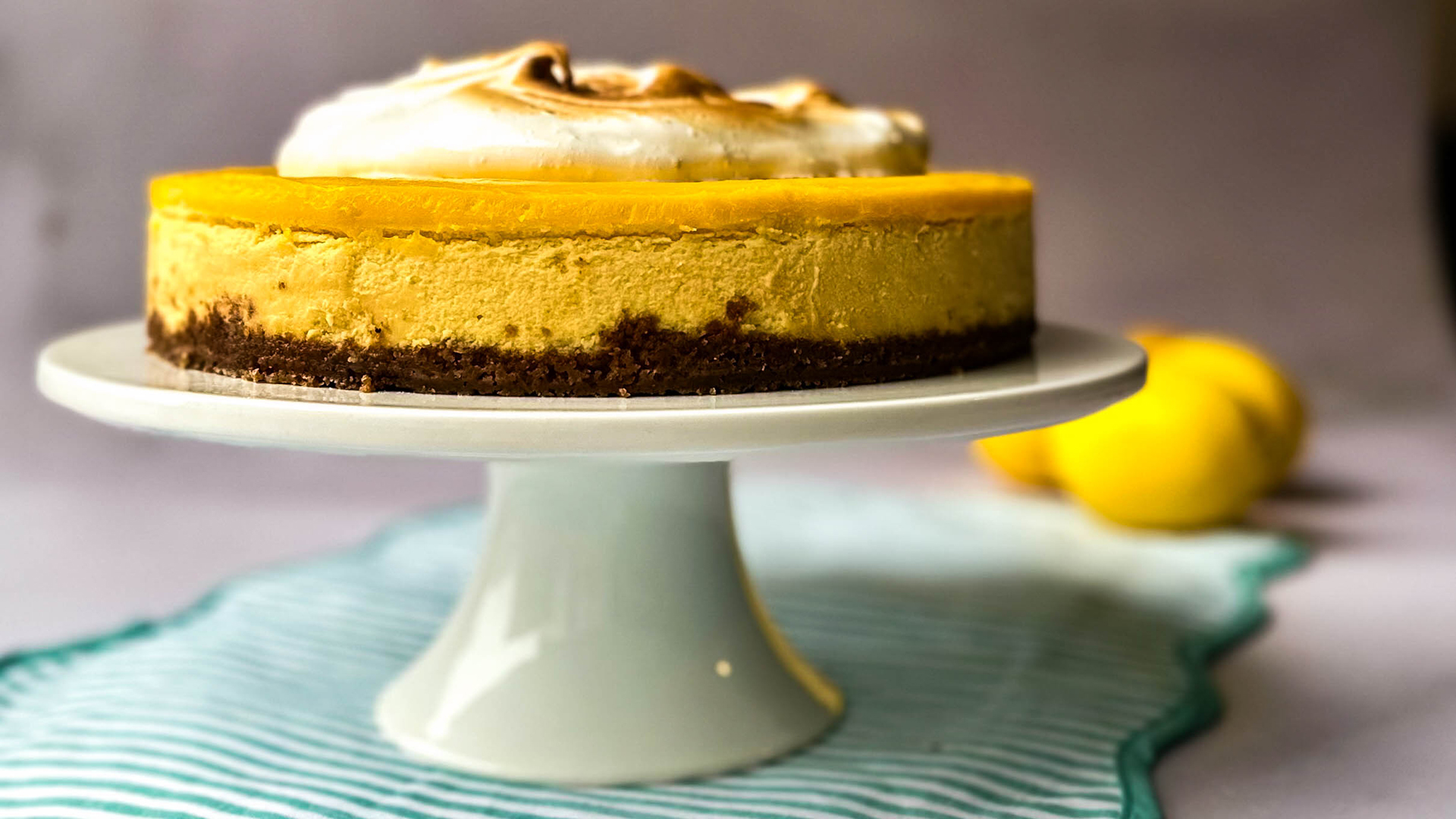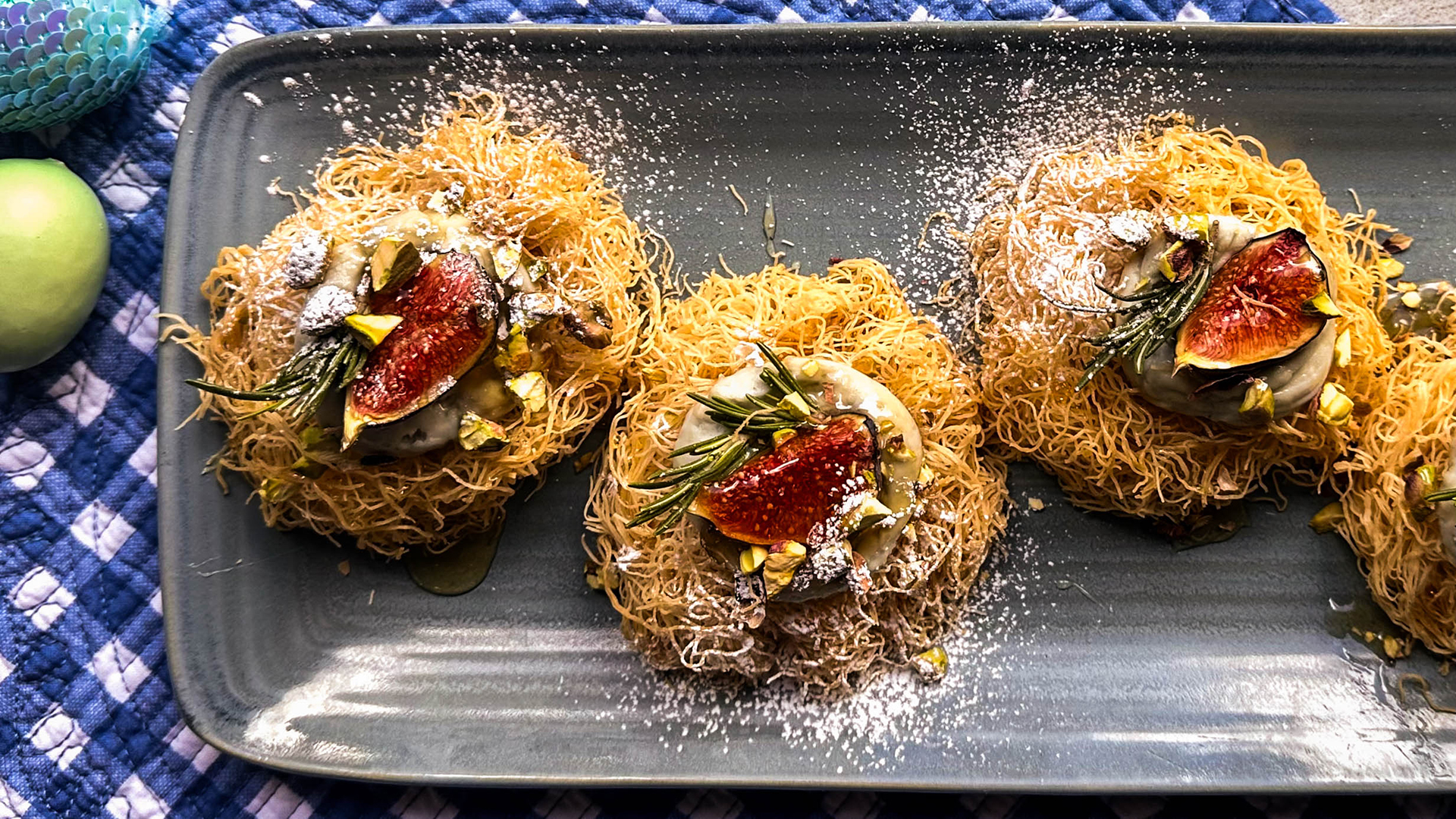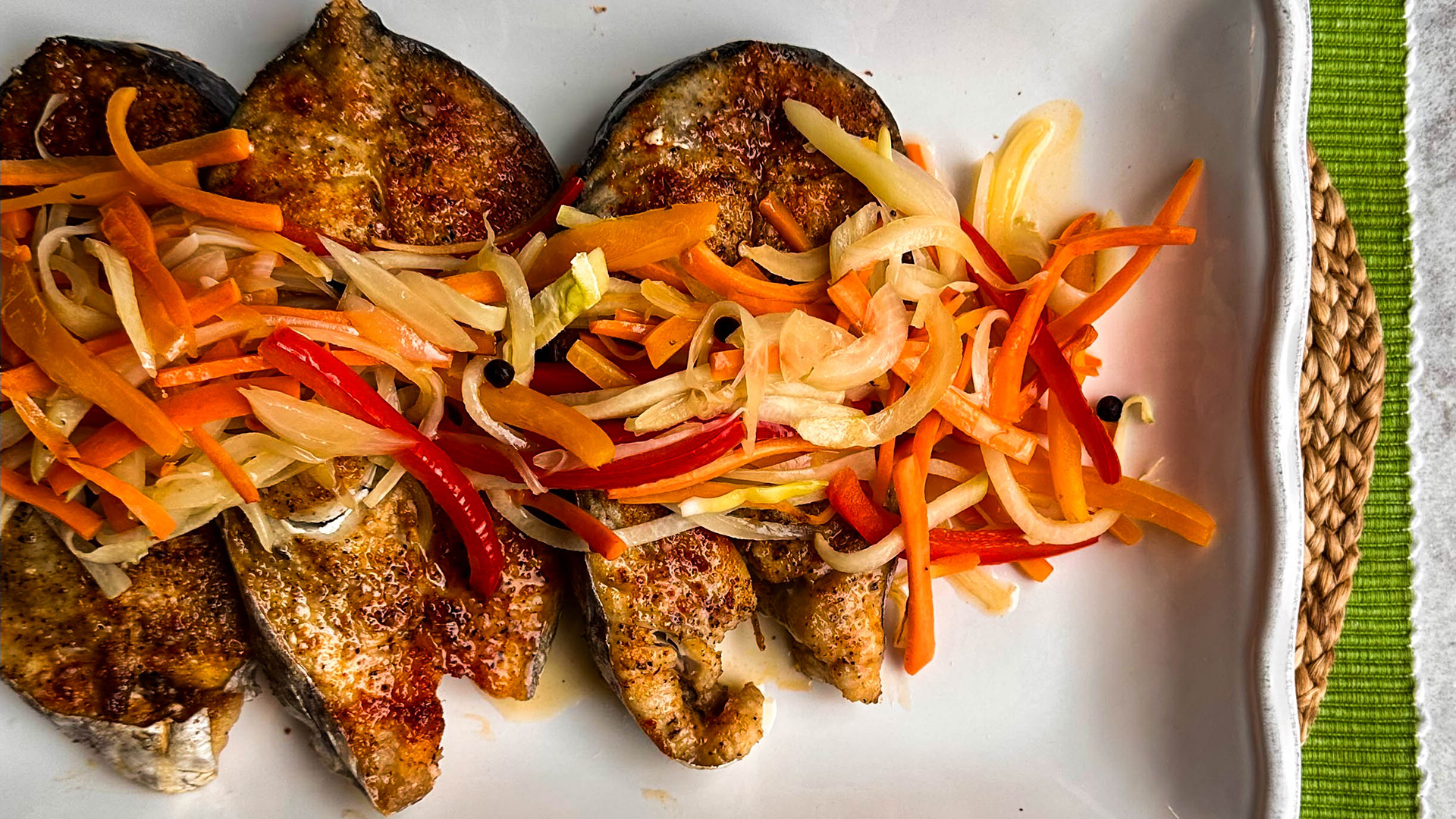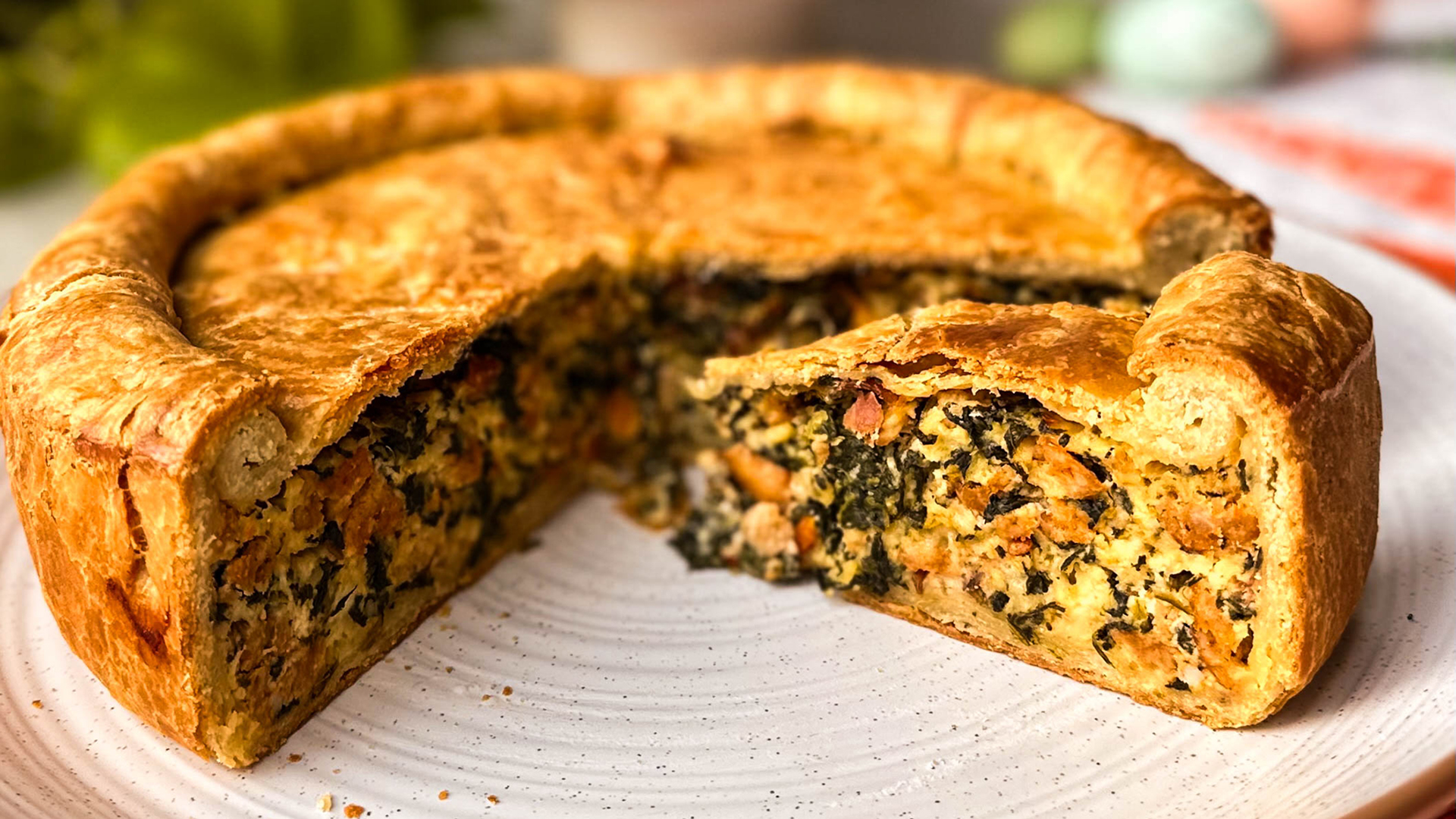Shuba
Shuba is a traditional Russian and Ukrainian salad consisting of layers of smoked herring and grated carrots, beets, and potatoes. These are all held together by a mayo-based dressing. When I was growing up, shuba conjured up the holidays for me, and thanks to my aunt, who found a way to veganize this family classic, I continue to enjoy this salad on special occasions. I love getting all the ingredients ready in anticipation of sharing this salad with loved ones—and having a slice of it myself. From boiling and grating the vegetables to preparing the dressing, soaking the seaweed in tamari (to replace the traditional herring), and carefully layering all the flavours, when making this salad I’m reminded to slow down and enjoy the process. I know it will be tempting to enjoy this salad right away after all the love you put into it, but I recommend chilling it for at least 2 hours (and up to overnight) to let the flavours develop.
Ingredients
- 2 Yukon Gold potatoes, unpeeled
- 2 beets, unpeeled
- 1 large carrot, unpeeled
- 1 bay leaf
- 1 tsp sea salt, plus more for salad assembly
- ¼ tsp black pepper, plus more to taste
- ½ tsp garlic powder
- 1 small onion, finely diced
- 1½ tsp lemon juice
Dressing
- 3 tbsp Homemade Mayo (recipe in directions) or store-bought vegan mayonnaise
- 1 tbsp water
Tamari Seaweed
- 3 sheets of nori, torn or cut in ¼-inch pieces
- 3 tbsp tamari
- Garnish (optional) Finely chopped chives or fresh parsley
Directions
Place the potatoes, beets, carrot, bay leaf, salt, and pepper in a large pot. Cover with water, put the lid on, and bring to a boil over high heat. Reduce the heat to medium and cook, covered, until all the vegetables are fork-tender. Remove each as they finish cooking, transferring them to a bowl. The potatoes should be ready first, followed by the carrot, and finally the beets. Place the bowl of veggies in the fridge to cool them completely, about 1 to 2 hours. Once the veggies are completely cooled, peel and grate the potatoes into their own bowl, then do the same for the carrots and then the beets (I recommend doing it in this order to prevent the color of the beets from transferring from your hands onto the other vegetables). To the bowl with the grated potatoes, add the garlic powder, a pinch of salt, and a pinch of pepper. Mix and set aside. In a separate bowl, mix together the diced onion and lemon juice. Set aside
For the dressing, in a small bowl, mix together the mayo and water until smooth. Set aside.
For the tamari seaweed, in a separate bowl, mix the nori with the tamari until the nori has absorbed all the liquid. Set aside. Remove the bottom of an 8-inch springform pan and place the ring on your serving plate (see note). Evenly spread the seaweed in the springform pan. Sprinkle evenly with the onion mixture, then with half of the potato mixture. Drizzle 2 teaspoons of dressing over the potatoes, then spread it out using the back of a spoon or a silicone spatula. Top with the remaining potato mixture. Drizzle on 2 teaspoons of dressing, then spread it out evenly. Top with the grated carrots, spread in an even layer. Cover with half of the grated beets. Top the beets with 2 teaspoons of dressing, spreading it to cover the beets. Top with the remaining beets. Drizzle the remaining mayo mixture over the beets, then spread evenly. Cover the springform pan with foil or a plate and refrigerate for at least 2 hours before garnishing with a sprinkling of finely chopped chives. Store in the fridge, tightly covered with foil, for up to 3 days.
Notes: If you don’t have a springform pan, form the layers directly on a plate. I recommend using a 9-inch plate to help keep the size of the shuba to about 8 inches in diameter.
HOMEMADE MAYO
½ cup unsweetened soy milk (see note)
1 tsp lemon juice
1 tsp apple cider vinegar
1 tsp maple syrup
¼ tsp mustard powder
¼ tsp salt, plus more to taste
1 cup avocado oil (see note)
Flipping through this book, you might have noticed that I love mayo. It is one of those beloved simple ingredients that can become, with a bit of prep and love, a wonderful addition to so many meals. It appears in a number of my recipes, including my Ultimate Breakfast Sandwich (p. 57), Shuba (p. 85), and Olivier Salad (p. 93). Although vegan mayo has become quite accessible for me in Canada over the past couple of years, I understand that it might not be for everyone, or it might be expensive where you live. So I want to share a homemade mayo recipe that is super easy to make, uses accessible ingredients, and costs up to five times less than store-bought mayo, especially if you choose to sub in a more affordable oil like canola oil.
°°°
Blend all the ingredients except the oil in a high-speed blender on high speed for 10 seconds. Reduce the speed to medium-low, remove the lid or its center cap, and slowly pour in the oil with the motor running. Replace the center cap or lid and increase the speed to high, blending for another 10 seconds or until thick and creamy, like traditional mayo. Taste and add more salt to your liking. Store in the fridge in a lidded jar for up to 10 days.
Notes: Soy milk is the only milk that yields successful results every time for me, so I would not suggest substituting it with a different plant-based milk. You can swap the avocado oil, if you prefer. Canola oil is an inexpensive alternative if you want your mayo to have a quite neutral taste. Grapeseed oil also works if you love its flavor, which has a subtly bitter quality to it. If you use olive oil, opt for one that is mild in flavor. But do not use coconut oil, as it will solidify when stored in the fridge. If you do not have a high-speed blender, use an immersion blender. Simply put all the ingredients except the oil into the tall blender cup, blend for a few seconds, then slowly stream the oil into the mixture and blend until thick, moving the blender up and down. Want to jazz up your mayo? After blending, fold in chopped fresh herbs such as dill, chives, parsley, basil, or oregano—or, for an extra kick, 1 to 3 tablespoons of smooth Dijon mustard. Or transform this mayo into my delicious and bright Tangy Aioli (p. 259).
Excerpted from Savouring by Murielle Banackissa. Copyright © 2024 Murielle Banackissa. Photographs by Murielle Banackissa. Published by Appetite by Random House®, a division of Penguin Random House Canada Limited. Reproduced by arrangement with the Publisher. All rights reserved.


